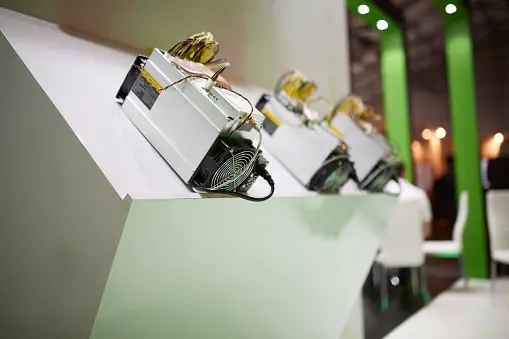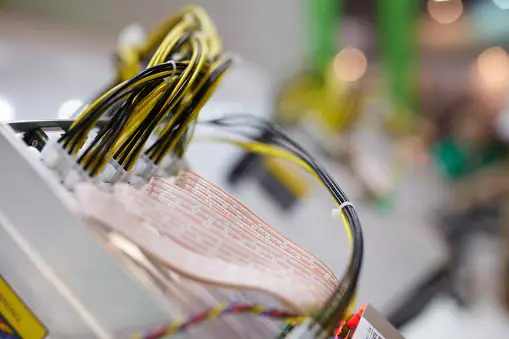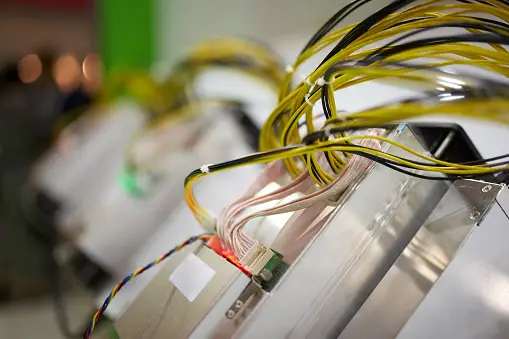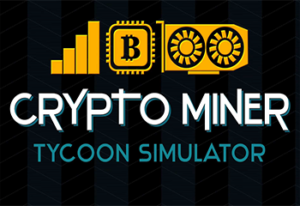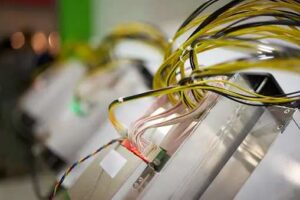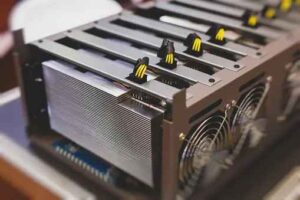
How to Building an ASIC Miner?
How to Building an ASIC Miner?
Have you ever wondered what goes into the creation of those powerful ASIC miners that drive the cryptocurrency mining industry? The process of building an ASIC miner might seem complex and daunting, but with the right knowledge and resources, it’s entirely feasible.
ASIC miners, or Application-Specific Integrated Circuit miners, are specialized hardware devices designed specifically for the purpose of mining cryptocurrencies such as Bitcoin or Ethereum. Unlike general-purpose CPUs or GPUs, ASIC miners are optimized for performing the repetitive calculations required for mining with maximum efficiency.
So, how exactly do you go about building an ASIC miner from scratch?
First and foremost, you’ll need to have a deep understanding of the underlying principles of cryptocurrency mining and the specific algorithm that your ASIC miner will be targeting. This knowledge will guide you in selecting the appropriate ASIC chip or chips for your miner. These chips are the heart of the miner, responsible for carrying out the cryptographic calculations necessary for mining.
Next, you’ll need to design the circuit board that will house the ASIC chips, as well as other components such as power regulators, cooling systems, and connectors. This requires expertise in electrical engineering and circuit design, as well as access to specialized software for PCB layout and schematic capture.
Once the design is complete, you’ll need to prototype and test your ASIC miner to ensure that it functions as intended and delivers the expected mining performance. This may involve multiple iterations of design refinement and testing to optimize performance and address any issues that arise.
Finally, once your ASIC miner has passed all tests and meets your quality standards, you can move into production. This involves sourcing components, manufacturing the PCBs, assembling the miners, and conducting quality control checks to ensure that each unit meets the required specifications.
Throughout the entire process, attention to detail and adherence to best practices are crucial to ensure the success of your ASIC miner build.
In conclusion, building an ASIC miner requires a combination of technical expertise, careful planning, and attention to detail. By following the steps outlined above and leveraging the right resources, you can create a high-quality ASIC miner that meets the demands of the cryptocurrency mining market.
More questions about ASIC Miner
-
What are the key components of an ASIC miner?
The key components of an ASIC (Application-Specific Integrated Circuit) miner typically include:
- ASIC Chips: These are the specialized integrated circuits designed specifically for mining a particular cryptocurrency algorithm. ASIC chips are optimized for performing the repetitive hashing calculations required for mining with maximum efficiency.
- Printed Circuit Board (PCB): The PCB serves as the backbone of the ASIC miner, providing a platform for mounting and interconnecting all the components. It houses the ASIC chips, as well as other essential components such as power regulators, memory, and communication interfaces.
- Cooling System: ASIC miners generate a significant amount of heat during operation due to the intensive computational workload. A robust cooling system, typically consisting of heat sinks, fans, and sometimes liquid cooling solutions, is essential to dissipate this heat and maintain optimal operating temperatures.
- Power Supply Unit (PSU): ASIC miners require a reliable power supply to operate efficiently. A high-quality PSU capable of delivering sufficient power with stable voltage regulation is crucial to ensure consistent performance and prevent damage to the miner.
- Control Board: The control board is responsible for managing the operation of the ASIC miner, including controlling the ASIC chips, monitoring temperatures and voltages, and communicating with external devices such as mining pools or mining software.
- Enclosure: The enclosure or chassis provides physical protection for the internal components of the ASIC miner and helps to dissipate heat generated during operation. It also typically includes mounting points for fans and other cooling components.
- Networking Interface: Most ASIC miners are equipped with Ethernet or Wi-Fi interfaces to connect to the internet and communicate with mining pools or other networked devices. This allows miners to participate in the mining process and receive rewards for contributing hashing power.
- User Interface: Some ASIC miners feature a built-in user interface, such as a web-based dashboard or a dedicated control panel, to allow users to monitor and configure the miner’s settings easily. This interface may provide real-time statistics, status alerts, and options for adjusting mining parameters.
Overall, these components work together to create a complete ASIC miner capable of efficiently mining cryptocurrencies and contributing to the blockchain network’s security and operation.
-
How does ASIC mining differ from CPU or GPU mining?
ASIC (Application-Specific Integrated Circuit) mining, CPU (Central Processing Unit) mining, and GPU (Graphics Processing Unit) mining are three distinct methods of cryptocurrency mining, each with its characteristics and advantages. Here’s how they differ:
-
ASIC Mining:
- ASIC mining involves the use of specialized hardware devices called ASIC miners, which are designed specifically for mining a particular cryptocurrency algorithm, such as SHA-256 for Bitcoin or Ethash for Ethereum.
- ASIC miners are highly efficient at performing the specific hashing calculations required for mining, as they are optimized for this purpose. They offer significantly higher hash rates and energy efficiency compared to CPUs or GPUs.
- ASIC miners are purpose-built for mining and cannot be used for general-purpose computing tasks. They are therefore not versatile but excel at their intended function, making them the preferred choice for large-scale mining operations.
-
CPU Mining:
- CPU mining relies on the processing power of a computer’s central processing unit (CPU) to perform mining calculations. It was the original method of mining cryptocurrencies when Bitcoin was first introduced.
- CPUs are general-purpose processors designed to handle a wide range of tasks, making them versatile but relatively inefficient for mining. They offer low hash rates and consume more power compared to ASIC miners or GPUs.
- CPU mining is not economically viable for most cryptocurrencies, as the difficulty of mining has increased significantly over time, making it impractical to mine using CPUs alone.
-
GPU Mining:
- GPU mining involves the use of graphics processing units (GPUs) to perform mining calculations. GPUs are designed for rendering graphics in video games and other applications but are also capable of performing parallel processing tasks efficiently.
- GPUs offer higher hash rates and better energy efficiency compared to CPUs, making them a more viable option for mining certain cryptocurrencies, especially those that are ASIC-resistant, such as Ethereum.
- GPU mining is more accessible to individual miners than ASIC mining, as GPUs are widely available and can be repurposed for other tasks when not mining. However, it still requires a significant investment in hardware and consumes a considerable amount of electricity.
In summary, ASIC mining is specialized and highly efficient but lacks versatility, CPU mining is inefficient and not practical for most cryptocurrencies, and GPU mining offers a balance between efficiency and accessibility, especially for ASIC-resistant coins. The choice of mining method depends on factors such as the specific cryptocurrency being mined, the available hardware, and the individual miner’s preferences and resources.
-
Are there any challenges or risks associated with building an ASIC miner?
Building an ASIC (Application-Specific Integrated Circuit) miner has challenges and risks. While the potential rewards can be substantial, especially in the cryptocurrency mining industry, several factors aspiring ASIC miner builders should consider:
- Complexity of Design: Designing an ASIC miner involves intricate engineering and technical expertise. Developing the ASIC chip requires specialized semiconductor design knowledge, including integrated circuit architecture, circuit layout, and fabrication processes. The complexity of the design process can be daunting and requires significant resources and expertise.
- High Development Costs: Developing an ASIC miner from scratch entails substantial upfront costs, including research and development expenses, prototyping costs, and fabrication costs for the ASIC chips. These costs can run into millions of dollars, making ASIC miner development prohibitive for individuals or small companies without adequate financial resources.
- Time-to-Market: Manufacturer designing and manufacturing ASIC miners is time-consuming and can take months or even years from conception to market launch. Delays in the design, fabrication, or testing phases can prolong the time-to-market, impacting the competitiveness of the miner in the fast-paced cryptocurrency mining industry.
- Technological Obsolescence: The rapid pace of technological advancement in the semiconductor industry means that ASIC miners can quickly become obsolete. Newer generations of ASIC chips with higher hash rates and improved energy efficiency are constantly being developed, making it challenging for older-generation ASIC miners to remain competitive.
- Supply Chain Risks: Building an ASIC miner requires sourcing components from various suppliers, including ASIC chips, PCBs, cooling systems, and power supplies. Disruptions in the supply chain, such as component shortages, manufacturing delays, or geopolitical tensions, can impact the production schedule and availability of the miner.
- Regulatory Uncertainty: The cryptocurrency mining industry is subject to regulatory scrutiny and evolving legal frameworks in different jurisdictions. Regulatory changes, bans on cryptocurrency mining, or restrictions on the use of ASIC miners can pose risks to the viability of ASIC miner projects and their profitability.
- Market Volatility: The cryptocurrency market is known for its volatility, with prices of digital assets experiencing significant fluctuations over short periods. The profitability of ASIC mining operations is directly tied to the value of the mined cryptocurrencies, and market downturns can affect the return on investment for ASIC miners.
In conclusion, while building an ASIC miner offers the potential for lucrative returns in the cryptocurrency mining industry, it also entails significant challenges and risks. Successful ASIC miner projects require careful planning, substantial financial investment, technical expertise, and a thorough understanding of the market dynamics and regulatory landscape.
Conclusion
Building an ASIC miner requires technical expertise and careful planning, but with the right approach, it’s entirely feasible to create a high-quality miner that meets the demands of the cryptocurrency mining market.

